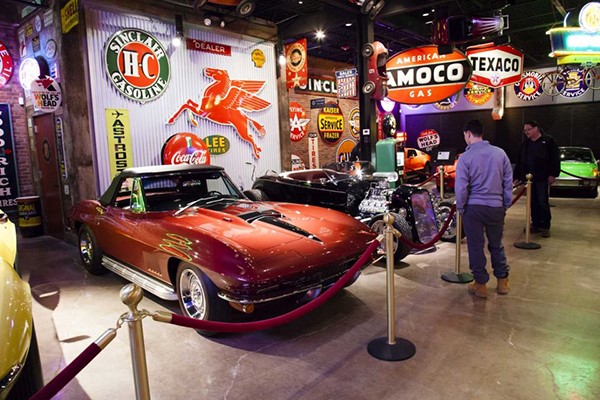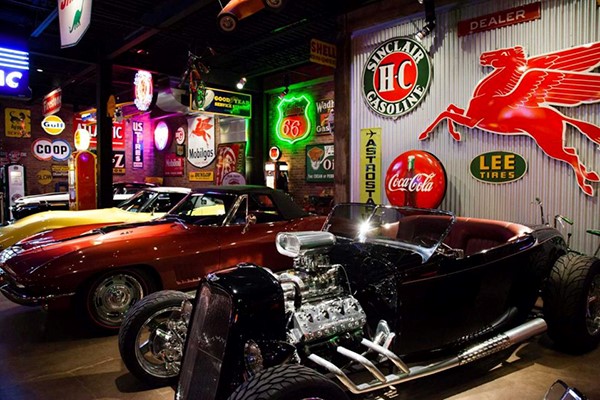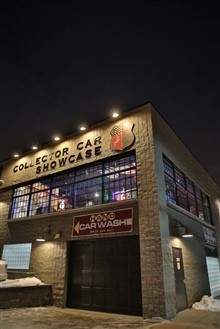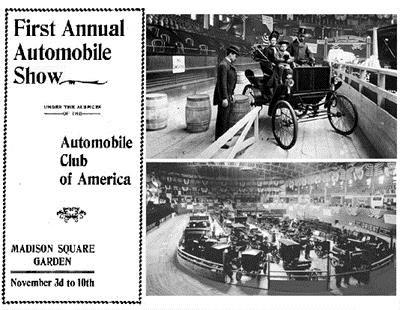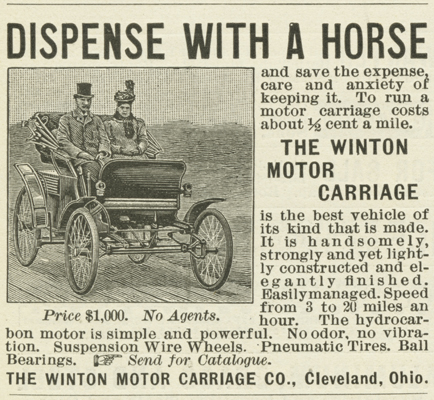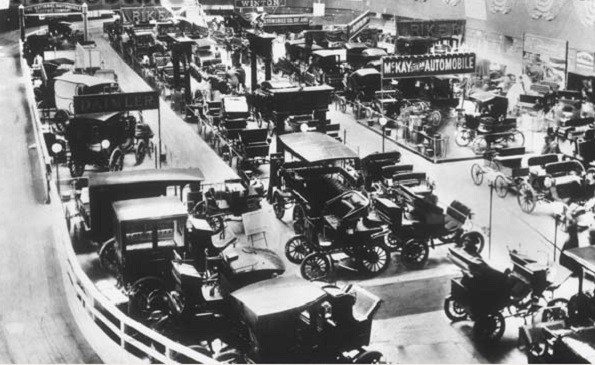Classic Cars and Memorabilia Museum opens in Oyster Bay, NY
Oyster Bay, NY – “It’s a combination of a gas station, Disneyland and a man cave,” owner and Oyster Bay resident David Jacobson says. “Long Island has a tremendous car culture. I thought Oyster Bay was a natural fit.” Enter the showcase and you are faced with a collection of 17 cars displayed behind velvet ropes, and more than 1,000 automotive signs hanging all over.
“I like old stuff,” says Jacobson, 51. “We wanted everything to be as authentic as possible. It represents a different time.” Cars range from a 1974 Ferrari 365 GT4 — the first 12-cylinder mid-engine Ferrari ever made — to a 1965 Volkswagen bus to a 1953 Chevrolet 5 window pickup truck. There’s even a 1958 BMW Isetta, which Jacobson found in Oregon.
“The Isetta is loud and obnoxious,” Jacobson says. “It feels like a motorcycle with a shell around it.” There’s a 1932 black Ford Roadster, completely restored. “This is one of the most fun cars you will ever ride in,” Jacobson says, grinning. The cars — most are owned by Jacobson, but a few are on loan from fellow collectors — will be rotated every four to six weeks to keep the display fresh. As the owner of GrooveCar auto buying service, he knows something about the allure of a good ride.
“Cars identify people. They can tell a lot about the personality of someone,” Jacobson says. “I’m a Porsche guy.” Among his personal collection: a 1960 signal red Porsche 356, a 1973 Porsche Carrera RS (which he deems “the Mona Lisa of Porsches”) plus a very rare 1995 Porsche Carrera RS, one of only five in the country. (Comedian Jerry Seinfeld has one as well.)
While some may come purely to check out the wheels, there’s a service area where you can get your vehicle hand washed for $29.99 or a full detailing from $250 to $1,000. Annual club membership ($150-$500) allows access to a lounge area and the first floor, where more cars are on display and a working slot car racetrack is available for members only. The museum also is hosting catered events for up to 100 people, from adult birthday parties to corporate events to fundraisers.
Mark Tulley, 65, of Carle Place serves as the regional director of the National Corvette Restorers Society, which will hold its annual general membership meeting in the space next month. For the event, Jacobson will have a host of Corvettes on display, ranging from 1953 to 1982. “There’s nothing like this on Long Island,” says Tulley. “It’s like an adult toy store.”
Dominick Randazzo, 45, of Bayville has been watching construction take place over the past two years and stops in for a peek on a recent Saturday afternoon. “I didn’t know what to expect, but it’s quite nice,” says Randazzo, who drove a 1969 Dodge Coronet RT while growing up. “It’s a lot to take in.”
Jason Roske, 35, of North Bellmore is amazed by the atmosphere of the showroom. “The work they put into this place is crazy,” says Roske, a self-described muscle car guy. “This is what we grew up on. What little kid doesn’t play with Matchbox cars? Now these are the life-size versions.”
COLLECTOR CAR SHOWCASE
WHEN | WHERE 10 a.m.-4 p.m. Tuesdays, Wednesdays and Fridays, 10 a.m.-7 p.m. Thursdays and 10 a.m.-6 p.m. Saturdays, 85 Pine Hollow Rd., Oyster Bay
INFO 516-802-5297, collectorcarshowcase.com
ADMISSION $7 ($10 adult and child age 8-15)
Source: New York Newsday

